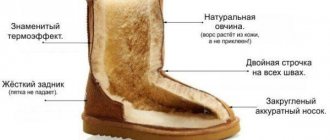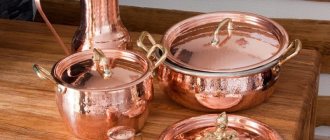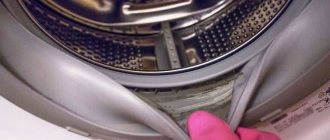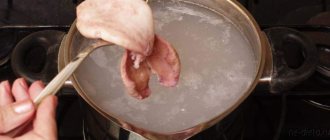The cause of scale and its consequences
Scale consists of insoluble chemical elements that are deposited in heat exchange devices when hard water is heated to boiling water. The precipitate consists of salts from crystals of magnesium carbonate, calcium, magnesium and bicarbonate. Scale formation occurs as follows:
- When water is heated, calcium and magnesium bicarbonate decomposes;
- Bicarbonates are converted to less soluble carbonate;
- A precipitate forms;
- Each time, during the heating process, deposits form and concentrate on the heating element and the surface of the device.
Important! The formation of scale depends on the hardness of the water used, which is determined by chemical components.
Consequences of scale
Accumulations of deposits inside the electric kettle lead to several difficulties:
- the device takes longer to heat up;
- the structure of water changes, harmful calcium and magnesium salts appear in it;
- the taste of the liquid deteriorates;
- the metal body of the device may rust;
- tooth enamel is destroyed.
There are a number of negative consequences due to scale
Important! If scale is not removed in time, this can lead to damage to the heating element.
The best way to protect against scale
The key factor influencing the formation of deposits on the kettle is an excess of magnesium and calcium salts, which leads to increased water hardness. Special flow filters with softening cartridges help reduce the concentration of magnesium and calcium salts in water, solve the problem of its hardness and prevent the formation of deposits in electrical appliances. Using water purifying filters helps prevent limescale in your electric kettle.
An effective technique is to regularly (at least once a month) clean the container of deposits and periodically rinse with cold water. These measures will help keep your electric kettle clean.
To keep the electrical appliance clean, you should pour out the water remaining after boiling and rinse the appliance before boiling a fresh portion.
At home, it is recommended to install an electromagnetic water converter, which will help reduce its hardness and prevent the appearance of deposits on electrical appliances, washing machines, and water heating tanks.
How to descale an electric kettle
The crystallized precipitate decomposes when exposed to inorganic and organic acids. Therefore, to remove scale that has formed in a household electric kettle, you should use acid-containing products.
Citric acid and juice
Freshly squeezed juice and acid in powder form are used. The product has a gentle, gentle effect on devices made of glass, ceramics, stainless steel and even plastic. The ingrained scale that remains in an electric household kettle can be removed quickly, but to figure out how to remove it, you need to prepare a special solution:
- For 0.5 liters of water add 2 tbsp. l. lemon powder or lemon juice squeezed from ¼ citrus fruit;
- The solution is poured into a kettle, boiled and left until it cools;
- The liquid along with the deposits is poured out, and the device is thoroughly washed.
Use freshly squeezed juice and powdered acid
Important! If the crystallized sediment is not very old, it will disappear after one procedure.
Baking soda
To clean plaque from the surface of the device, you need to take 1 liter of water and 2 tbsp. l. soda The solution must be boiled and allowed to stand for some time. It's better to wait until it cools down. The mineral deposit will not go away completely, but it will become much softer and can be easily removed by hand.
To clean plaque from the surface, take 1 liter of water and 2 tbsp. l. soda
Important! Plastic colored products cannot be cleaned with baking soda or soda ash.
9% vinegar or 70% essence
How to quickly get rid of old layers of scale in your electric kettle and spend a minimum of effort? Use vinegar, which is aggressive on mineral deposits. The solution is prepared as follows:
- Mix 0.5 liters of water, 250 ml of vinegar or 2 tbsp. l. essences;
- The liquid is poured into a kettle, which is boiled;
- The acid is carefully poured into boiling water;
- The solution remains for 1 hour - during this time the scale softens;
- The lid is periodically opened, the remaining plaque is removed with a scraper and sponge;
- The kettle is rinsed well and boiled several times to completely remove any vinegar residue.
Vinegar is aggressive on mineral deposits
Important! The procedure is performed in a well-ventilated area, as vinegar has an unpleasant, pungent odor.
Carbonated drinks
As practice shows, you can clean a household electric kettle from salt scale using carbonated drinks. Coca-Cola, Sprite, and Schweppes contain large amounts of citric acid. You need to release a little gas from the bottle and pour the lemonade into the kettle. The liquid is brought to a boil and left in the kettle for 1-2 hours. Then it is poured out and the jug is washed.
You can clean your electric kettle using carbonated drinks.
Important! The method is suitable for small deposits in stainless steel electrical appliances.
Oxalic acid
Oxalic acid copes with mineral deposits no worse than other means. To do this, do the following:
- Pour the product into a kettle and add 0.5 liters of water;
- Boil the solution and leave until it cools completely;
- Remove any remaining deposits using a kitchen sponge;
- Rinse the device well and boil again.
Interesting to know! To remove salt deposits, you can take fresh sorrel. But due to the low concentration of acid in fresh leaves, the procedure requires repeating several times.
In addition to acid, you can also use fresh sorrel
Cleaners
Special chemicals quickly remove plaque using citric, sulfamic or adipic acid. They come in the form of liquids, powders, and tablets. Use cleaning products strictly according to instructions. A solution is prepared from each product, poured into a kettle and boiled for 30-40 minutes.
Before and after cleaning
The used liquid must be drained, and the softened scale must be carefully removed. To remove chemical products, water is boiled 2-3 times.
Is it possible to clean, the pros and cons of the procedure
The cleaning properties of baking soda have been known for a long time. Sodium bicarbonate (also known as sodium bicarbonate or simply soda), dissolving in hot water, destroys limescale, removes unpleasant odors and disinfects the walls of the kettle.
Baking soda is an excellent cleaning agent for glass, enamel, ceramic, and electrical appliances.
Pros of using baking soda to clean your kettle:
- It not only cleans efficiently, but also disinfects the surface.
- Absolutely safe for health, does not emit toxic substances upon contact with hot water.
- Soda diluted with water can be used as a mild abrasive that does not leave scratches on the surface.
Among the negative characteristics, soda is insufficiently effective against old limescale deposits when used in its pure form. In order to enhance the cleaning properties, soda must be mixed with other ingredients (for example, salt or citric acid).
Not recommended for use
How to effectively clean an electric kettle from old scale at home? Use gentle products. The following should not be used to clean electric kettles:
- peels of fruits and vegetables. The method is effective only for enamel and metal cookware without electric heating;
- drinks with dyes. There is a risk that colored particles will remain on the inner surface of the kettle;
- triple impact method - citric acid, soda and vinegar. An aggressive mixture can damage the surface of the device;
- brine and marinade. This method is also only suitable for cookware that is heated on the stove.
Important! The choice of cleaning method depends on the material from which the kettle is made.
Removal using Antiscale
This method is the simplest. All you have to do is buy this product and do everything according to its instructions. The price of anti-scale is very affordable and it shouldn’t take much effort to purchase it. If you do not trust various chemical means, then use other methods using natural remedies.
Before cleaning the electric kettle using these methods, especially if the cleaning solution is left inside the device, warn all family members about this. So that none of them accidentally drinks it.
These are the most common methods to combat scale. Knowing how to use them, getting rid of scale in an electric kettle will be much easier. Which method is best to choose is up to you, but you can try everything and, depending on the convenience and efficiency of cleaning, make the final choice in favor of some method.
It is true that there are other ways to remove scale from an electric kettle, but their use is less effective and is not always justified. Therefore, the use of untested methods may not only fail to clear the scale, but also make the kettle completely unsuitable for further use.
Tips for carrying out work
Thick formations inside the kettle should not be scraped off with sharp objects. You should not use metal scourers and brushes - they can damage the surface of the dishes. Models with open heaters inside and outside can only be washed with special substances.
To ensure that the product acts carefully, wash the inside of the electric kettle, and then add homemade compounds or chemical reagents. This way the lime “coat” will become loose and dissolve faster.
After removing plaque, the device must be washed with a sponge or soft brush. You need to boil water in it 2-3 times and rinse thoroughly. This way you will prevent poisoning.
Important! Chemical products with abrasive particles can severely scratch the kettle.
Caring for the device
Regular maintenance is simply necessary for your kettle, even if you don’t use it often. For example:
- use only purified water;
- do not leave water in the kettle for a long time;
- wipe the outside of the device with napkins or a microfiber cloth;
- do not rub the heating element with an abrasive, as it has a special protective layer on it, and rough cleaning can damage it;
- Clean the kettle at least every 2-3 weeks if you use running water, and in the case of filtered water - once every 3-5 months.
Preventive measures
To prevent scale formation, you should follow simple rules:
- Once a month, clean the surface and heating element from scale using any of the convenient methods;
- To prepare drinks, use only purified filtered water;
- Before pouring a new one, drain the remaining boiled water;
- Before each boiling, rinse the surface of the kettle;
- Buy devices with a closed spiral;
- Rinse the kettle before adding water.
Watch a video on how to descale an electric kettle











